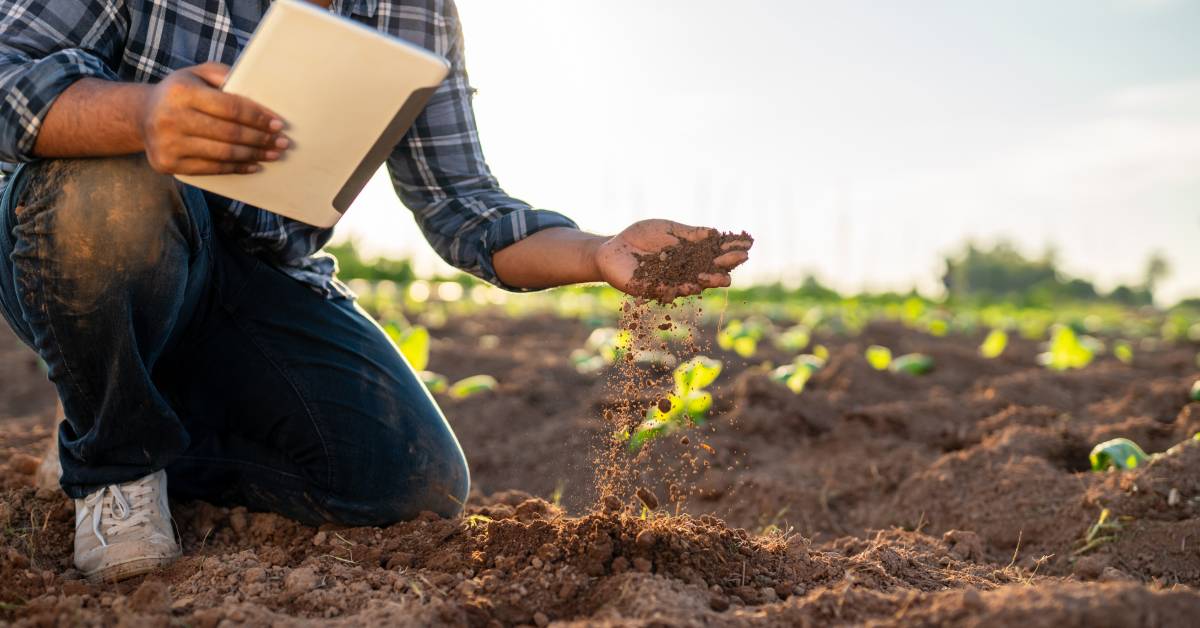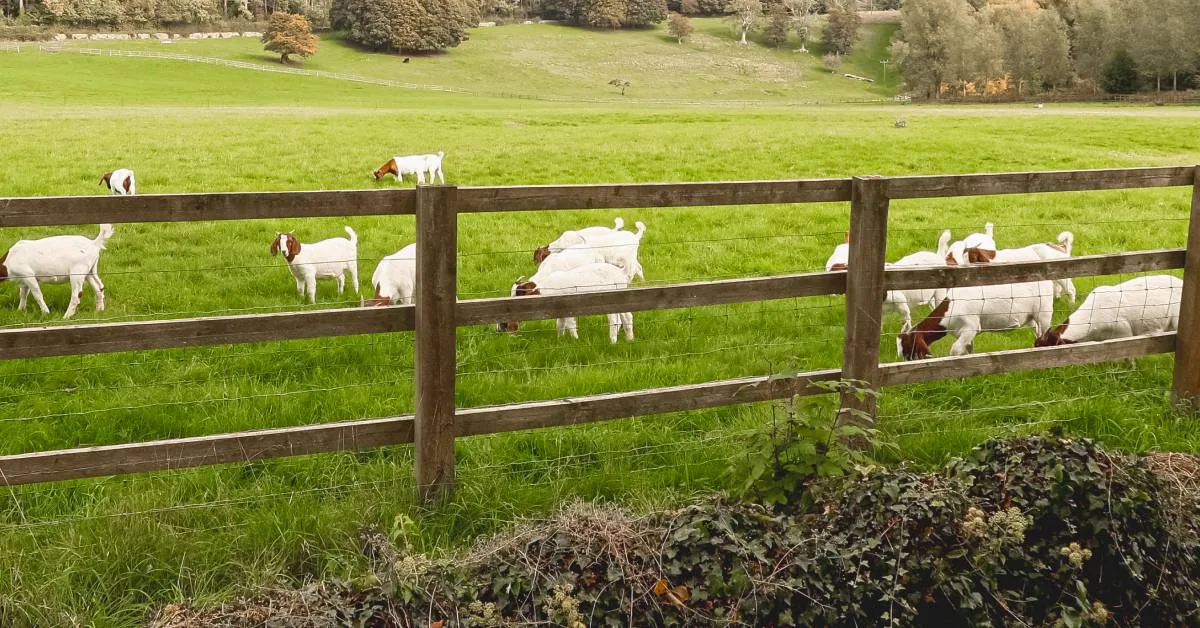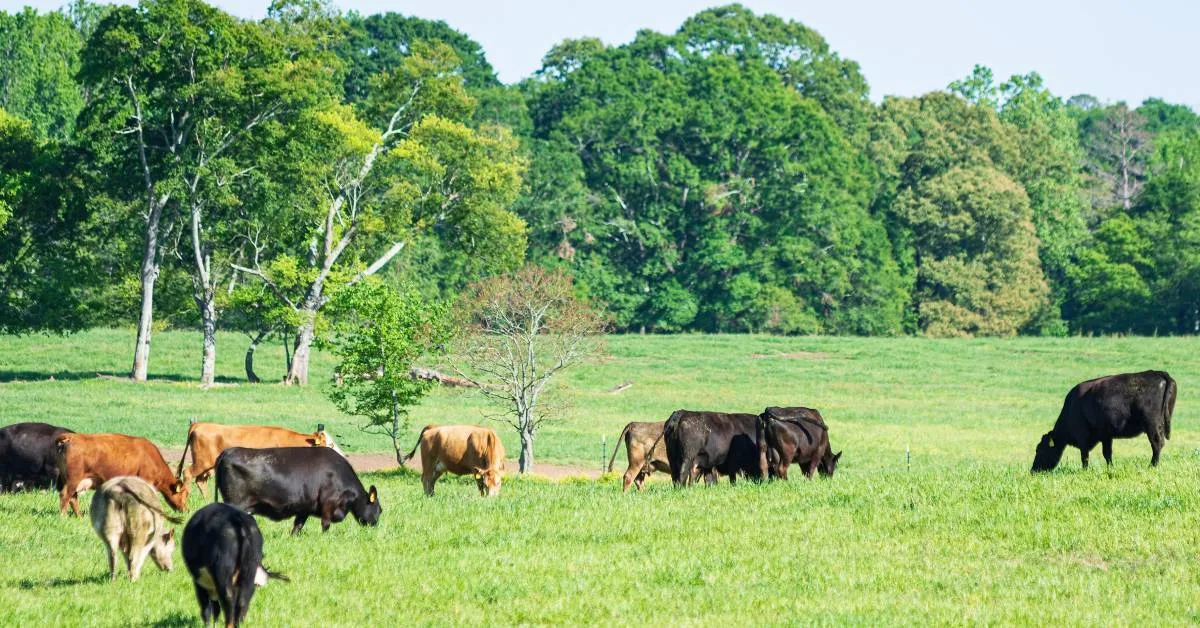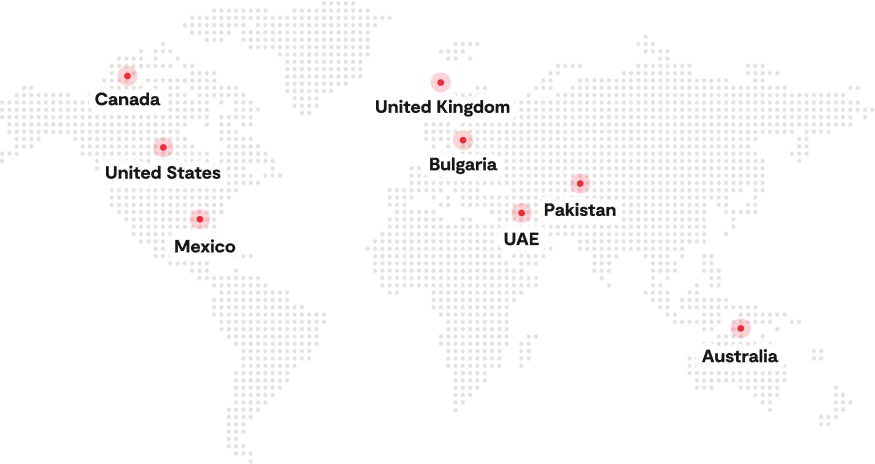You can apply the same fertilizer rate you did last year, follow your rotation plan to the letter, and still see your yields drop. For many growers, the problem isn’t on the surface. It’s underground, in the slow erosion of biological function, compaction layers they can’t see, or nutrient losses they’re not tracking. And the cost of ignoring it adds up, season after season.
According to the Food and Agriculture Organization (FAO), over one-third of the world’s soils are degraded, impacting fertility, water retention, and long-term crop viability. In this environment, any effort to improve soil health must go beyond routine practices; it needs field-specific insights and repeatable results.
Soil health improves when decisions are grounded in what’s actually happening below the surface. From compaction detection to microbial mapping, the tools now exist to make those decisions timely, precise, and tied to real field outcomes. This blog explores how top operators are using those tools not just to track soil data, but to act on it with measurable, farm-level results.
What’s Breaking Soil Health, and How Tech Steps In
Most soil degradation doesn’t start with a crisis, it builds gradually through compaction, nutrient imbalance, and biological decline that go unnoticed until yields dip or variability spikes. Traditional sampling and calendar-based applications often miss these signals, leading to late interventions and wasted inputs. Where operations begin to break that cycle is by replacing routine assumptions with timely, field-specific observation.
Consider a situation where emergence looks uneven across a few low-lying zones. Rather than chalk it up to seed quality or planter error, a closer look reveals saturated soils and poor infiltration, the result of subsurface compaction from past traffic. Without that diagnosis, a grower might deep-till the whole field, when only a few zones require structural correction.
In another field, crops in two adjacent management zones show a 15-bushel yield gap, despite identical fertilization. The problem isn’t surface-level; it’s a mismatch in cation exchange capacity and organic matter, creating variable nutrient retention. Only through spatial soil mapping and follow-up tissue analysis does the issue become clear, leading to zone-specific rate adjustments instead of another season of over-application.
These aren’t edge cases, they reflect the quiet, compounding issues that erode soil health when left unchecked. Technology doesn’t replace agronomy, but it does sharpen it, helping identify what’s changing, where it’s happening, and how to intervene with precision to improve soil health across diverse conditions.
In the next section, we’ll break down the key technologies that make these insights possible, and how they’re being used to shift soil health from reactive to responsive.
Key Technologies for Improving Soil Health
Soil health is now a critical performance factor in day-to-day farm operations. Growers are being asked to improve productivity, reduce inputs, and meet compliance targets, all while working with increasingly unpredictable soil conditions. To improve soil health under these constraints, technology is stepping in, not to replace agronomy, but to refine it, with tools that deliver real-time insights, field-specific prescriptions, and measurable biological outcomes.
This section covers the core innovations transforming how soil is assessed, treated, and restored, built for operations that need more than general advice.
AI-Enabled Soil Sensors & Mapping
AI soil monitoring agriculture systems combine sensor-based field intelligence with pattern-detecting models that get more accurate with each season. Over time, these models build historical baselines that predict nutrient leaching, compaction layers, and biological suppression, zone by zone.
Modern sensor systems measure:
- Soil moisture tension and drainage speed
- EC and salinity zones (mainly in irrigated lands)
- Microbial respiration and temperature variance
- Nitrate or organic carbon levels (select platforms)
These data streams are then visualized through digital soil health tools combined with agricultural data analytics, offering prescriptive guidance to agronomists and farm managers in real time.
Variable-Rate Application (VRT) & Precision Inputs
Using precision agriculture soil mapping, growers are creating multi-layered field prescriptions that treat soil as a mosaic, not a monolith. This enables accurate application of inputs based on organic matter levels, pH variance, and crop residue breakdown rates.
Field Result: In the U.S. Midwest, farmers adopting variable rate technology (VRT) for fertilizer application, sometimes paired with yield and soil data, can see operating profit and net returns rise by 1.1%, and reported per-acre profit gains of up to $63–$100 more than conventional approaches, thanks to optimized input use and improved management of soil variability.
These systems are especially valuable on farms with variable soil types, where applying uniform inputs can do more harm than good. In many cases, unresolved farm data management challenges, like siloed records or inconsistent sampling, lead to delayed or suboptimal soil decisions.
Robotics & Autonomous Micro-Dosing Tools
Autonomous robots are no longer limited to large-scale operations. Today, sprayers, seeders, and biological applicators are being miniaturized and adapted to precision tasks like:
- Micro-dosing inoculants into depleted zones
- Spot-treating fungal suppressants without field passes
- Delivering subsoil compost tea in compacted areas
These technologies reduce tractor weight on soil, and their precision reduces waste while helping improve soil health through site-specific corrections.
Microbial & Biological Enhancement Technologies
Not all degraded soils are chemically poor; many are biologically inactive. That’s where targeted inoculants, biostimulants, and digesters come in. These are now being paired with digital soil health tools that track biological indicators like respiration, enzyme activity, and organic matter dynamics.
These methods closely align with regenerative agriculture best practices that prioritize long-term system restoration over short-term gain.
Controlled Traffic Farming & No-Till Practices
Soil compaction quietly damages the ground, making it harder for roots to grow and water to soak in. Controlled Traffic Farming (CTF) uses GPS and precision guidance to keep heavy machinery on fixed lanes. This approach protects the soil’s natural structure and keeps productive areas loose and porous.
When combined with no-till farming and leaving crop residue on fields, this approach is a practical and effective way to improve soil health through better soil structure, without relying on biological products.
Field-Proven Techniques to Improve Soil Health Right Now
Improving soil health requires more than good intentions and better tools; it demands consistent, field-based practices that rebuild soil structure, revive biological life, and support long-term fertility. Below are six soil techniques proven effective across different geographies, soil types, and farm sizes. Each one is rooted in real-world results and complements modern tech, but stands on its own as a repeatable, adaptable soil health strategy.
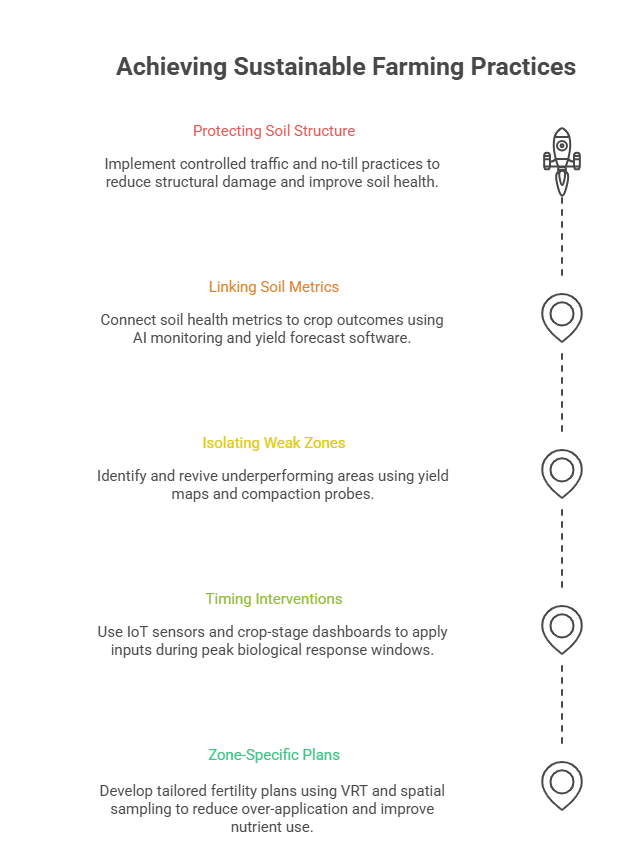
1. Rewire Your Crop Rotation to Prioritize Soil Builders
Many commercial farms default to high-yielding cash crops season after season. But rotations that include legumes, deep-rooted species, or multi-species cover crops directly improve soil health by reducing disease cycles, boosting microbial diversity, and improving aggregate stability. For example, integrating short-season clover or vetch ahead of corn can replace synthetic nitrogen inputs over time.
2. Shift to Zone-Specific Nutrient Planning
Rather than blanket fertilization based on historical yield or acreage, top-performing growers are moving toward zone-specific plans that account for soil type, compaction zones, and biological activity. This shift doesn’t require reinventing your inputs; it’s about redirecting your nutrient strategy to where it will do the most good and genuinely improve soil health over time. Many farmers overlay past yield maps with soil sampling grids to calibrate this.
3. Establish Permanent Tramlines or Controlled Traffic Zones
If your fields show rutting, crusting, or water ponding after a light rain, compaction may be undermining your entire soil ecosystem. A proven technique to reverse this is Controlled Traffic Farming (CTF), not just as a tech concept, but through tramlines you commit to season after season. This drastically reduces load impact on your root zones, improving porosity and water infiltration.
4. Convert Depleted Areas Into Soil Trial Zones
Not every part of a field breaks down the same way. Some areas lose their fertility faster, usually because of erosion, overuse, or chemical stress. Instead of treating the whole field the same, experienced farmers are now testing new soil-building practices on just those weak spots. They might try different composts, cover crops, or biological boosters and see what works best before applying it more broadly. It’s a low-risk way to bring poor zones back to life and learn what truly helps improve soil health on your farm.
5. Use Real-Time Monitoring to Time Interventions
One of the most effective, but often underutilized, techniques is using digital crop and soil health tools designed by agriculture industry experts like Folio3 AgTech, which are not just for tracking, but for timing interventions. For instance, live moisture and compaction readings can dictate when to apply microbial amendments or when to delay irrigation. This leads to smarter decisions and prevents overcorrection.
Industry Insight: Many farms integrating IoT soil sensors with daily decision dashboards are seeing faster biological recovery and better rainfall utilization.
These techniques reflect a shift in mindset: from reacting to symptoms to building proactive, biology-friendly systems that support crop performance year after year. When deployed consistently, they not only improve soil health but also lower input dependency and create more resilient growing conditions, especially under weather extremes.
How to Measure Soil Health Effectively Using Folio3 AgTech
Measuring soil health used to mean sending samples to a lab and waiting weeks for results you couldn’t always act on. Today, farms that actually improve soil health are doing more than just collecting data; they’re managing it in real time.
That’s where Folio3 AgTech Crop Management Software comes in. It turns soil health data into something useful, layered, visual, and tied directly to your fields. Whether you’re running routine tests or pulling in live sensor feeds, the software helps you track, compare, and make sense of everything from soil texture to biological activity.
Here’s how growers are using it to manage soil health more effectively:
- Track lab results, field tests, and in-season notes in one place
- Compare changes in organic matter or compaction over time
- Spot declining zones before they affect yield performance
- Use IoT soil sensors to monitor moisture, salinity, or temperature live
- Connect soil trends with crop outcomes using AI-powered yield forecasts
What makes us different from spreadsheets or standalone lab reports is context. You’re not just storing numbers, you’re seeing what’s changing, where it’s happening, and what needs attention. That context helps you improve soil health through better timing, smarter input decisions, and more consistent tracking season after season.
Best Practices for Adopting Soil Health Technology
Soil health tools only deliver results when they’re tied to a clear plan, used consistently, and adopted in a way that fits with your operation. Here’s how leading farms are deploying tech not just to track, but to actually improve soil health with long-term impact.
1. Start With a Defined Soil Problem
Identify a specific challenge, nutrient lock-up, shallow rooting, inconsistent moisture retention, and build around that. If certain zones underperform despite adequate inputs, start with targeted diagnostics. For example, many growers now begin with precision fertilization mapping before deploying broader analytics. This tight focus prevents wasted spend and shows early ROI.
2. Build a Soil-Crop Feedback Loop
Soil test results, drone imagery, and yield maps shouldn’t sit in separate files. Use a system that overlays them in one dashboard to expose patterns. If organic matter is dropping in your high-yield zones, it might be time to rotate in a cover crop or reduce tillage. These decisions are only possible when you connect soil data to actual field outcomes, and that’s how you start to improve soil health over time.
3. Match Tech to Your Local Conditions
The same tool can produce wildly different values depending on your soil type, weather, and cropping system. In semi-arid climates, IoT soil sensors help optimize water use while protecting microbial life by avoiding unnecessary irrigation. In humid zones, farms might lean more on EC tracking to detect nutrient leaching and soil stratification.
4. Involve Everyone Who Touches the Field
One of the biggest adoption mistakes is keeping tech decisions at the manager level. Your applicators, equipment operators, and scouts need to know how to log observations, use zone-based maps, and report anomalies. When everyone speaks the same data language, your team can act faster, fix issues earlier, and collectively improve soil health as a shared outcome, not just a KPI.
5. Set Review Points Throughout the Season
If you only evaluate soil health after harvest, you’ve missed four chances to improve it. Leading operations set checkpoints at planting, early vegetative stage, mid-season stress windows, and pre-harvest. This allows for real-time adjustments, whether that’s changing a root zone amendment plan or shifting to in-season foliar applications. It also gives you field-level evidence of what worked.
When applied with operational focus and agronomic intent, soil health technology becomes more than a dashboard. It helps you track progress, close yield gaps, and improve soil health in a way that’s repeatable, field-tested, and financially sound.
Conclusion
Soil health shifts through the season, with weather, with inputs, with crop pressure. What separates resilient farms today isn’t more effort or bigger budgets. It’s how they respond to that change.
Operations seeing long-term improvement aren’t relying on annual tests or blanket strategies. They’re narrowing in on what’s changing, where it’s changing, and why, using in-field sensors, targeted sampling, and spatial diagnostics to replace assumption with observation.
That shift, from routine to response, is what makes soil a manageable variable. It’s what allows decisions to be timed better, applied more precisely, and evaluated clearly, not just after harvest, but throughout the season.
FAQs
What’s The Risk of Using Technology to Improve Soil Health Without The Right Context?
The biggest risk is misinterpretation. Raw data without context can lead to unnecessary corrections, or worse, input misuse. For example, applying compost based on a single EC reading might backfire if compaction or poor drainage is the real issue. To safely improve soil health, tech must be paired with local agronomic insight and a clear understanding of field variability. Data is powerful, but only when grounded in real soil behavior.
Does Using AI or Data Tools Really Help Improve Soil Health On Mixed-Crop Farms?
Yes, using AI for agriculture especially on operations with diverse rotations or multiple soil types. AI-driven tools can analyze soil responses across different crops, revealing zone-specific needs that would otherwise be missed. This allows you to improve health with crop-specific strategies, such as alternating root architectures or adjusting nutrient plans by crop group.
Can I Improve Soil Health Without Going Fully Regenerative?
Yes, you can, without a full shift to regenerative farming. Incremental changes like adjusting tillage frequency, using site-specific input strategies, or introducing microbial treatments in weak zones can deliver measurable improvements.

